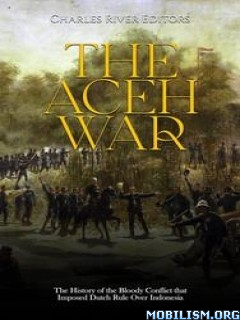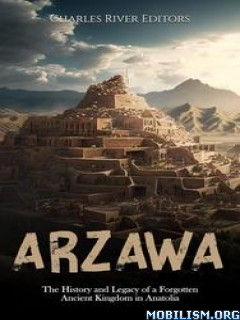Welcome to Mobilism...
the single largest user-powered database of apps, games and books for mobile device users of all platforms! With millions of users and releases, Mobilism is one of the largest and oldest mobile content sites, as well as, in our opinion, by far the most organized one.
Sit back, download some books, learn something new, and enjoy your stay! When you're ready, you can head to the forums by Clicking Here.
The Economist Audio Edition - April 20, 2024 (.MP3)
Posted by: rainsky at Today, 7:16 pm in Audiobooks
The Economist Audio Edition - April 20, 2024
Requirements: .MP3 reader, 212 MB
Overview: About The Economist
"It is not only The Economist's name that people find baffling. Here are some other common questions.
First, why does it call itself a newspaper? Even when The Economist incorporated the Bankers' Gazette and Railway Monitor from 1845 to 1932, it also described itself as "a political, literary and general newspaper".
It still does so because, in addition to offering analysis and opinion, it tries in each issue to cover the main events—business and political—of the week. It goes to press on Thursdays and, printed simultaneously in six countries, is available in most of the world's main cities the following day or soon after. Readers everywhere get the same editorial matter. The advertisements differ. The running order of the sections, and sometimes the cover, also differ. But the words are the same, except that each week readers in Britain get a few extra pages devoted to British news.
Why is it anonymous? Many hands write The Economist, but it speaks with a collective voice. Leaders are discussed, often disputed, each week in meetings that are open to all members of the editorial staff. Journalists often co-operate on articles. And some articles are heavily edited. The main reason for anonymity, however, is a belief that what is written is more important than who writes it. As Geoffrey Crowther, editor from 1938 to 1956, put it, anonymity keeps the editor "not the master but the servant of something far greater than himself. You can call that ancestor-worship if you wish, but it gives to the paper an astonishing momentum of thought and principle."
Genre: Audiobooks > Non-Fiction

...
View full post | Post reply
Requirements: .MP3 reader, 212 MB
Overview: About The Economist
"It is not only The Economist's name that people find baffling. Here are some other common questions.
First, why does it call itself a newspaper? Even when The Economist incorporated the Bankers' Gazette and Railway Monitor from 1845 to 1932, it also described itself as "a political, literary and general newspaper".
It still does so because, in addition to offering analysis and opinion, it tries in each issue to cover the main events—business and political—of the week. It goes to press on Thursdays and, printed simultaneously in six countries, is available in most of the world's main cities the following day or soon after. Readers everywhere get the same editorial matter. The advertisements differ. The running order of the sections, and sometimes the cover, also differ. But the words are the same, except that each week readers in Britain get a few extra pages devoted to British news.
Why is it anonymous? Many hands write The Economist, but it speaks with a collective voice. Leaders are discussed, often disputed, each week in meetings that are open to all members of the editorial staff. Journalists often co-operate on articles. And some articles are heavily edited. The main reason for anonymity, however, is a belief that what is written is more important than who writes it. As Geoffrey Crowther, editor from 1938 to 1956, put it, anonymity keeps the editor "not the master but the servant of something far greater than himself. You can call that ancestor-worship if you wish, but it gives to the paper an astonishing momentum of thought and principle."
Genre: Audiobooks > Non-Fiction

...
The Jugurthine War by Charles River Editors (.ePUB)
Posted by: mobilismno1 at Today, 7:13 pm in History
The Jugurthine War: The History of the Roman Republic’s Controversial Conflict with the Numidians by Charles River Editors
Requirements: .ePUB reader, 3.19 Mb
Overview: Numida was the complete opposite of the North African stereotype of a desolate place - it was a land of plenty, the home of rich agricultural land that provided a good share of the Roman Empire’s food. Numidia was also home to the Numidian people, who were known for their horsemanship skills, bellicosity, and capriciousness when it came to their friends and allies. From the 3rd century BCE until the mid-1st century BCE, the Numidians ruled their land as independent kingdoms that dealt with their more powerful neighbors on a relatively equal footing. As was the case with most non-Hellenic peoples, the Numidians and their culture simultaneously intrigued and repulsed the Romans, but as with all the other peoples, the Numidians also eventually became part of the Roman Empire.
Their most famous conflict with the Romans was the Jugurthine War, even though the Romans do not appear to have officially declared war on Numidia. The Romans entered Numidia determined to defeat Jugurtha and his Numidian army in a very conventional way, but having fought alongside and against the Numidians in the Punic Wars, the Romans should have known better, as Jugurtha knew that he had little chance of defeating the Romans in head-to-head combat. Numidia was rich, but it was not as rich as Rome in resources or people, and although the Numidian military was among the best in the Mediterranean at the time, it was not equipped to defeat the Romans.
Jugurtha looked west for aid to the Moorish king, Bocchus, as the Romans elected a new consul, Gaius Marius, to take control of the Roman army in 107 BCE. As legate in the Jugurthine conflict, Marius was in effect Metellus’s right hand man and the de facto military commander. The military success Marius had in Africa gave him the impetus to make a serious run for the consulship in 108 BCE, but Metellus did not want him to leave the campaign in North Africa and did not sanction his return to Rome. Undeterred, Marius began campaigning, partly galvanized, according to Sallust, by a fortune teller who told him that the gods so favored him that he would inevitably succeed in all his endeavors.
It was also while on campaign in Africa that Marius honed his “common touch,” a trait that was to stand him in good stead in his political career. He ate with his troops and even undertook manual labor with them. Marius’s reputation as a military commander and the growing unrest at the length of time Metellus was taking to bring Jugurtha to heel all combined to ensure that he was elected consul for 107 BCE.
While Marius took responsibility for the infantry, the cavalry was placed under the command of his quaestor, Lucius Cornelius Sulla, but Jugurtha continued to avoid battles where he could. Consequently, the Numidians resorted to hit and run, guerrilla warfare tactics, and Marius soon found that the previous Roman tactics of gradually cutting off the Numidians’ supplies and reinforcements was not so ineffective after all.
The most significant aspect of the Jugurthine War was the rivalry that it produced between Marius and Sulla. As was tradition, the commander, Marius, received the credit for the victory, but Sulla resented that his own part was downplayed, in particular his personal success in taking Jugurtha into custody. His supporters spread the story of Jugurtha’s capture around Rome and sought to undermine Marius’s image by making certain that everyone knew it had been Sulla, not the consul, who was responsible for putting an end to the war in Numidia. So began the rivalry that would end in civil war several years later and establish Sulla as a temporary dictator, a course of events that would inspire Pompey the Great and Julius Caesar a generation later.
Genre: Non-Fiction > History

...
View full post | Post reply
Requirements: .ePUB reader, 3.19 Mb
Overview: Numida was the complete opposite of the North African stereotype of a desolate place - it was a land of plenty, the home of rich agricultural land that provided a good share of the Roman Empire’s food. Numidia was also home to the Numidian people, who were known for their horsemanship skills, bellicosity, and capriciousness when it came to their friends and allies. From the 3rd century BCE until the mid-1st century BCE, the Numidians ruled their land as independent kingdoms that dealt with their more powerful neighbors on a relatively equal footing. As was the case with most non-Hellenic peoples, the Numidians and their culture simultaneously intrigued and repulsed the Romans, but as with all the other peoples, the Numidians also eventually became part of the Roman Empire.
Their most famous conflict with the Romans was the Jugurthine War, even though the Romans do not appear to have officially declared war on Numidia. The Romans entered Numidia determined to defeat Jugurtha and his Numidian army in a very conventional way, but having fought alongside and against the Numidians in the Punic Wars, the Romans should have known better, as Jugurtha knew that he had little chance of defeating the Romans in head-to-head combat. Numidia was rich, but it was not as rich as Rome in resources or people, and although the Numidian military was among the best in the Mediterranean at the time, it was not equipped to defeat the Romans.
Jugurtha looked west for aid to the Moorish king, Bocchus, as the Romans elected a new consul, Gaius Marius, to take control of the Roman army in 107 BCE. As legate in the Jugurthine conflict, Marius was in effect Metellus’s right hand man and the de facto military commander. The military success Marius had in Africa gave him the impetus to make a serious run for the consulship in 108 BCE, but Metellus did not want him to leave the campaign in North Africa and did not sanction his return to Rome. Undeterred, Marius began campaigning, partly galvanized, according to Sallust, by a fortune teller who told him that the gods so favored him that he would inevitably succeed in all his endeavors.
It was also while on campaign in Africa that Marius honed his “common touch,” a trait that was to stand him in good stead in his political career. He ate with his troops and even undertook manual labor with them. Marius’s reputation as a military commander and the growing unrest at the length of time Metellus was taking to bring Jugurtha to heel all combined to ensure that he was elected consul for 107 BCE.
While Marius took responsibility for the infantry, the cavalry was placed under the command of his quaestor, Lucius Cornelius Sulla, but Jugurtha continued to avoid battles where he could. Consequently, the Numidians resorted to hit and run, guerrilla warfare tactics, and Marius soon found that the previous Roman tactics of gradually cutting off the Numidians’ supplies and reinforcements was not so ineffective after all.
The most significant aspect of the Jugurthine War was the rivalry that it produced between Marius and Sulla. As was tradition, the commander, Marius, received the credit for the victory, but Sulla resented that his own part was downplayed, in particular his personal success in taking Jugurtha into custody. His supporters spread the story of Jugurtha’s capture around Rome and sought to undermine Marius’s image by making certain that everyone knew it had been Sulla, not the consul, who was responsible for putting an end to the war in Numidia. So began the rivalry that would end in civil war several years later and establish Sulla as a temporary dictator, a course of events that would inspire Pompey the Great and Julius Caesar a generation later.
Genre: Non-Fiction > History

...
The Aceh War by Charles River Editors (.ePUB)
Posted by: mobilismno1 at Today, 7:13 pm in History
The Aceh War: The History of the Bloody Conflict that Imposed Dutch Rule Over Indonesia by Charles River Editors
Requirements: .ePUB reader, 7.92 Mb
Overview: During the 17th century, the Netherlands, despite having only 1.5 million people in 1600, became a global maritime and trading power. By contrast, France at the time had 20 million people, Spain had 8 million, and England had 5 million. Nevertheless, Amsterdam became one of the most important urban centers in the world and the location of the world’s first stock market, and Dutch merchant ships and pirates plied the Atlantic Ocean, the Indian Ocean, and the Pacific Ocean. The Dutch acquired colonies in the East Indies, where they seized control of the spice trade from the Portuguese, and in the West Indies, they acquired a number of islands from the Spanish (several of which are still Dutch today). They became the only Westerners who were allowed to trade with Shogunate Japan from a small island next to Nagasaki, and they settled the town that ultimately became New York City. Naturally, all of this imperialism generated enormous amounts of wealth that flowed into the Netherlands.
The Netherlands has had a complex and turbulent history involving the interplay of multiple political entities, ethnicities, and languages. The term "Netherlands" (Nederland in Dutch, Pay-Bas in French) refers to the low-lying topography of the region and today is used specifically to describe the country bordering Germany and Belgium, but historically it referred to the entire region occupied by Netherlands, Belgium, and Luxembourg. What made the Netherlands’ global influence in the 17th century all the more remarkable is that the Dutch had only recently achieved political independence through the process of fighting a long and brutal war of resistance against rule by the Spanish Hapsburgs, starting in 1568. In 1581, the seven northern provinces – Holland, Zeeland, Utrecht, Gelderland, Overijssel, Friesland, and Groningen – declared their independence, and fighting took place back and forth on land and sea for decades, with the Dutch receiving some much-needed assistance from England’s Queen Elizabeth I. Thousands of civilians were massacred by the rampaging Spanish armies, and on the water, Dutch “sea beggars” attacked and harassed the Spanish fleet. Pro-Spanish privateers operating out of Dunkirk did the same against Dutch shipping.
All of this positioned the Dutch to wield massive imperialistic influence across the world, and a Dutch company dominated international waters while searching for conquest and riches. The Dutch East India Company, also known as VOC, was established around the beginning of the 17th century, and this nautical behemoth of a corporation was determined to squeeze everyone else out of the market. Vested with the power to wage war and exterminate any who dared stand in their way, the rest of the world stood by as the unstoppable force took over the whole of international maritime trade. The company would fight opponents across the globe, establishing a monopoly on the global spice trade that would not only rock the world but forever change the course of modern business history.
Naturally, not everybody welcomed the Europeans, and some of the fiercest opposition came from the Sultanate of Aceh. Aceh is now a part of Indonesia, but the people have stubbornly maintained a unique sense of self-identity based on a quite distinct and separate history. Once a major political and military power in the Indian Ocean, its power gradually declined over a period of several centuries, but Aceh successfully maintained its independence until 1873, when the Dutch invaded. The war between the Dutch and the Acehnese was the longest and bloodiest of the many Dutch military campaigns in Indonesia. Even after the Dutch technically subdued them, insurgency campaigns would last well into the 20th century, and sporadic fighting was still ongoing as the Japanese pushed across the Pacific in the 1930s and 1940s.
Genre: Non-Fiction > History

...
View full post | Post reply
Requirements: .ePUB reader, 7.92 Mb
Overview: During the 17th century, the Netherlands, despite having only 1.5 million people in 1600, became a global maritime and trading power. By contrast, France at the time had 20 million people, Spain had 8 million, and England had 5 million. Nevertheless, Amsterdam became one of the most important urban centers in the world and the location of the world’s first stock market, and Dutch merchant ships and pirates plied the Atlantic Ocean, the Indian Ocean, and the Pacific Ocean. The Dutch acquired colonies in the East Indies, where they seized control of the spice trade from the Portuguese, and in the West Indies, they acquired a number of islands from the Spanish (several of which are still Dutch today). They became the only Westerners who were allowed to trade with Shogunate Japan from a small island next to Nagasaki, and they settled the town that ultimately became New York City. Naturally, all of this imperialism generated enormous amounts of wealth that flowed into the Netherlands.
The Netherlands has had a complex and turbulent history involving the interplay of multiple political entities, ethnicities, and languages. The term "Netherlands" (Nederland in Dutch, Pay-Bas in French) refers to the low-lying topography of the region and today is used specifically to describe the country bordering Germany and Belgium, but historically it referred to the entire region occupied by Netherlands, Belgium, and Luxembourg. What made the Netherlands’ global influence in the 17th century all the more remarkable is that the Dutch had only recently achieved political independence through the process of fighting a long and brutal war of resistance against rule by the Spanish Hapsburgs, starting in 1568. In 1581, the seven northern provinces – Holland, Zeeland, Utrecht, Gelderland, Overijssel, Friesland, and Groningen – declared their independence, and fighting took place back and forth on land and sea for decades, with the Dutch receiving some much-needed assistance from England’s Queen Elizabeth I. Thousands of civilians were massacred by the rampaging Spanish armies, and on the water, Dutch “sea beggars” attacked and harassed the Spanish fleet. Pro-Spanish privateers operating out of Dunkirk did the same against Dutch shipping.
All of this positioned the Dutch to wield massive imperialistic influence across the world, and a Dutch company dominated international waters while searching for conquest and riches. The Dutch East India Company, also known as VOC, was established around the beginning of the 17th century, and this nautical behemoth of a corporation was determined to squeeze everyone else out of the market. Vested with the power to wage war and exterminate any who dared stand in their way, the rest of the world stood by as the unstoppable force took over the whole of international maritime trade. The company would fight opponents across the globe, establishing a monopoly on the global spice trade that would not only rock the world but forever change the course of modern business history.
Naturally, not everybody welcomed the Europeans, and some of the fiercest opposition came from the Sultanate of Aceh. Aceh is now a part of Indonesia, but the people have stubbornly maintained a unique sense of self-identity based on a quite distinct and separate history. Once a major political and military power in the Indian Ocean, its power gradually declined over a period of several centuries, but Aceh successfully maintained its independence until 1873, when the Dutch invaded. The war between the Dutch and the Acehnese was the longest and bloodiest of the many Dutch military campaigns in Indonesia. Even after the Dutch technically subdued them, insurgency campaigns would last well into the 20th century, and sporadic fighting was still ongoing as the Japanese pushed across the Pacific in the 1930s and 1940s.
Genre: Non-Fiction > History

...
Japanese Cookbook by Emma Yang (.PDF)
Posted by: mobilismno1 at Today, 7:12 pm in Food & Drink
Japanese Cookbook: Your Essential Guide To The Art Of Japanese Home Cooking In 50 Traditional Recipes by Emma Yang
Requirements: .PDF reader, 38 Mb
Overview: Are you looking for a cookbook that masterfully harmonizes simplicity with sophistication in the realm of Japanese cooking?
Discover "Japanese Cookbook" by Emma Yang, Your Essential Guide To The Art Of Japanese Home Cooking In 50 Traditional Recipes.
Immerse yourself in the delicate balance and intricate flavors of Japanese cuisine with Emma Yang's curated collection of 50 traditional recipes. This cookbook opens up a world of Japanese gastronomy, celebrated for its precision and aesthetics—from the comfort of a steaming bowl of Ramen to the fresh zest of a perfectly assembled Sushi platter. The guide provides an array of mainstream delights, treasured local fares, and innovative creations that promise to enrich your repertoire. Whether you're an aspiring chef or a seasoned gourmand, these approachable and authentic recipes are your next step to crafting restaurant-worthy Japanese dishes at home.
This Japanese Cookbook is replete with stand-out features including:
50 authentic Japanese recipes – A culinary odyssey from appetizers to desserts.
Lavishly printed in full color – Experience the visual appeal of each dish.
Generous photographs for every recipe – To guide your cooking journey.
Comprehensive nutritional information, variants, and historical context for each recipe – Enhance your understanding and enjoyment of Japanese cuisine.
Recipes that are effortlessly easy to execute – Perfect for home cooks of all skill levels.
Genre: Non-Fiction > Food & Drink

...
View full post | Post reply
Requirements: .PDF reader, 38 Mb
Overview: Are you looking for a cookbook that masterfully harmonizes simplicity with sophistication in the realm of Japanese cooking?
Discover "Japanese Cookbook" by Emma Yang, Your Essential Guide To The Art Of Japanese Home Cooking In 50 Traditional Recipes.
Immerse yourself in the delicate balance and intricate flavors of Japanese cuisine with Emma Yang's curated collection of 50 traditional recipes. This cookbook opens up a world of Japanese gastronomy, celebrated for its precision and aesthetics—from the comfort of a steaming bowl of Ramen to the fresh zest of a perfectly assembled Sushi platter. The guide provides an array of mainstream delights, treasured local fares, and innovative creations that promise to enrich your repertoire. Whether you're an aspiring chef or a seasoned gourmand, these approachable and authentic recipes are your next step to crafting restaurant-worthy Japanese dishes at home.
This Japanese Cookbook is replete with stand-out features including:
50 authentic Japanese recipes – A culinary odyssey from appetizers to desserts.
Lavishly printed in full color – Experience the visual appeal of each dish.
Generous photographs for every recipe – To guide your cooking journey.
Comprehensive nutritional information, variants, and historical context for each recipe – Enhance your understanding and enjoyment of Japanese cuisine.
Recipes that are effortlessly easy to execute – Perfect for home cooks of all skill levels.
Genre: Non-Fiction > Food & Drink

...
Lebanese And Italian Culinary Traditions by Emma Yang (.PDF)
Posted by: mobilismno1 at Today, 7:11 pm in Food & Drink
Lebanese And Italian Culinary Traditions: 2 Books In 1: Explore The Richness Of Middle Eastern Cuisines And Classic Recipes From Italy by Emma Yang
Requirements: .PDF reader, 110 Mb
Overview: Ever imagined the authentic zest of Italian pasta intertwined with the exotic spices of Lebanese mezze?
Introducing "Lebanese & Italian Cookbook: 2 Books In 1" by Emma Yang, featuring a collection of over 100 recipes that blend the warmth of Italy with the vibrancy of Lebanon.Join culinary maestro Emma Yang on a voyage where the aromatic landscapes of Lebanon meet the time-honored traditions of Italy. Her "Lebanese & Italian Cookbook" combines the best of both worlds in a fusion that promises to delight and inspire. With more than 100 exquisite recipes at your fingertips, you can craft meals that evoke the intimate trattorias of Rome and the lively streets of Beirut. Each page turns to reveal dishes steeped in cultural heritage, from sumptuous Italian Risottos to a fragrant Lebanese Fattoush. Discover the rich complexity of Lebanese staples like Kibbeh and Tabouleh, alongside Italian favorites like Margherita Pizza and Tiramisu, all crafted to accommodate the home cook's kitchen while retaining their authentic essence.
"Lebanese & Italian Cookbook" will enrich your culinary endeavors with:An expertly curated selection of over 100 Lebanese and Italian recipes – Explore an array of dishes that capture the spirit of both cuisines.Gorgeous color prints – Every recipe is complemented by a photograph that will tantalize your visual palate.Engaging photographs for each recipe – Images that guide and inspire you every step of the cooking journey.Nutritional information, creative variations, and storied histories for each dish – Journey deeper into the culinary narratives of Lebanon and Italy.Simple yet elegant recipes – Designed to facilitate easy cooking without compromising on authenticity or taste.Are you ready to savor the rich tapestry of Italian cooking and the bold flavors of Lebanese cuisine? "Lebanese & Italian Cookbook" awaits to transform your kitchen into a Mediterranean haven.
Genre: Non-Fiction > Food & Drink

...
View full post | Post reply
Requirements: .PDF reader, 110 Mb
Overview: Ever imagined the authentic zest of Italian pasta intertwined with the exotic spices of Lebanese mezze?
Introducing "Lebanese & Italian Cookbook: 2 Books In 1" by Emma Yang, featuring a collection of over 100 recipes that blend the warmth of Italy with the vibrancy of Lebanon.Join culinary maestro Emma Yang on a voyage where the aromatic landscapes of Lebanon meet the time-honored traditions of Italy. Her "Lebanese & Italian Cookbook" combines the best of both worlds in a fusion that promises to delight and inspire. With more than 100 exquisite recipes at your fingertips, you can craft meals that evoke the intimate trattorias of Rome and the lively streets of Beirut. Each page turns to reveal dishes steeped in cultural heritage, from sumptuous Italian Risottos to a fragrant Lebanese Fattoush. Discover the rich complexity of Lebanese staples like Kibbeh and Tabouleh, alongside Italian favorites like Margherita Pizza and Tiramisu, all crafted to accommodate the home cook's kitchen while retaining their authentic essence.
"Lebanese & Italian Cookbook" will enrich your culinary endeavors with:An expertly curated selection of over 100 Lebanese and Italian recipes – Explore an array of dishes that capture the spirit of both cuisines.Gorgeous color prints – Every recipe is complemented by a photograph that will tantalize your visual palate.Engaging photographs for each recipe – Images that guide and inspire you every step of the cooking journey.Nutritional information, creative variations, and storied histories for each dish – Journey deeper into the culinary narratives of Lebanon and Italy.Simple yet elegant recipes – Designed to facilitate easy cooking without compromising on authenticity or taste.Are you ready to savor the rich tapestry of Italian cooking and the bold flavors of Lebanese cuisine? "Lebanese & Italian Cookbook" awaits to transform your kitchen into a Mediterranean haven.
Genre: Non-Fiction > Food & Drink

...
Arzawa by Charles River Editors (.ePUB)
Posted by: mobilismno1 at Today, 7:10 pm in History
Arzawa: The History and Legacy of a Forgotten Ancient Kingdom in Anatolia by Charles River Editors
Requirements: .ePUB reader, 2.26 Mb
Overview: The Late Bronze Age Near East (c. 1550-1200 BCE) was a time and place of unprecedented wealth and stability. The major kingdoms of Egypt, Babylonia, Hatti, Mitanni, Assyria, and other regional powers established trade networks and diplomatic ties with each other, creating one of the world’s first global geopolitical systems in the process. There was war and conflict during this era, but most of the wars were border skirmishes that involved proxies, rarely changing the borders very much in the process. Modern scholars have divided the countries in this system into two groups: the major powers, which included those listed above along with a few others, and those who were usually ruled over or colonized by the major powers. But things were not always so black and white.
The major power of Mitanni was eliminated from the club and replaced by Assyria, while other kingdoms seemingly defy categorization in the system, or at least their placement is problematic and a source of historical debate. For example, Elam was certainly a major power and had diplomatic and trade ties with Babylonia, but because it had limited to no direct contact with the other major powers, most historians do not consider it one of the “Great Powers.” Likewise, the status of the mysterious country Alashiya is also the topic of many inquiries. Alashiya is mentioned in some of the Amarna Letters as a Great Power, and most modern scholars have agreed with that categorization, but where the country was and how long it held such a powerful status is hotly debated.
The equally mysterious land of Arzawa is another Late Bronze Age kingdom whose Great Power status has been questioned by some archaeologists and historians. Arzawa was a state or a collection of states in western Anatolia that challenged the Hittites for supremacy in the region. Although Arzawa never extended its borders beyond Anatolia, even at the apex of its military, diplomatic, and economic power, it did draw the attention of the Egyptians and is mentioned in in two of the famous Amarna Letters. For that reason, many scholars have labeled Arzawa a Late Bronze Age Great Power, but the designation has done little to flesh out the details of their enigmatic culture. Historians, archaeologists, and philologists still argue over many elements of Arzawa and its people, including who they were, how powerful the kingdom was, and even where it was located. It is likely that not all of these questions will ever be answered, but an examination of Arzawa's culture and history, especially its relations with the Hittites, does help bring this Bronze Age culture into better focus.
Genre: Non-Fiction > History

...
View full post | Post reply
Requirements: .ePUB reader, 2.26 Mb
Overview: The Late Bronze Age Near East (c. 1550-1200 BCE) was a time and place of unprecedented wealth and stability. The major kingdoms of Egypt, Babylonia, Hatti, Mitanni, Assyria, and other regional powers established trade networks and diplomatic ties with each other, creating one of the world’s first global geopolitical systems in the process. There was war and conflict during this era, but most of the wars were border skirmishes that involved proxies, rarely changing the borders very much in the process. Modern scholars have divided the countries in this system into two groups: the major powers, which included those listed above along with a few others, and those who were usually ruled over or colonized by the major powers. But things were not always so black and white.
The major power of Mitanni was eliminated from the club and replaced by Assyria, while other kingdoms seemingly defy categorization in the system, or at least their placement is problematic and a source of historical debate. For example, Elam was certainly a major power and had diplomatic and trade ties with Babylonia, but because it had limited to no direct contact with the other major powers, most historians do not consider it one of the “Great Powers.” Likewise, the status of the mysterious country Alashiya is also the topic of many inquiries. Alashiya is mentioned in some of the Amarna Letters as a Great Power, and most modern scholars have agreed with that categorization, but where the country was and how long it held such a powerful status is hotly debated.
The equally mysterious land of Arzawa is another Late Bronze Age kingdom whose Great Power status has been questioned by some archaeologists and historians. Arzawa was a state or a collection of states in western Anatolia that challenged the Hittites for supremacy in the region. Although Arzawa never extended its borders beyond Anatolia, even at the apex of its military, diplomatic, and economic power, it did draw the attention of the Egyptians and is mentioned in in two of the famous Amarna Letters. For that reason, many scholars have labeled Arzawa a Late Bronze Age Great Power, but the designation has done little to flesh out the details of their enigmatic culture. Historians, archaeologists, and philologists still argue over many elements of Arzawa and its people, including who they were, how powerful the kingdom was, and even where it was located. It is likely that not all of these questions will ever be answered, but an examination of Arzawa's culture and history, especially its relations with the Hittites, does help bring this Bronze Age culture into better focus.
Genre: Non-Fiction > History

...
Rebel Stars Series by Edward W. Robertson (.ePUB)
Posted by: Ebook-Collector at Today, 7:09 pm in Sci-Fi/Fantasy/Horror
Rebel Stars Series by Edward W. Robertson (Books 0-2)
Requirements: .ePUB reader, 1.5MB
Overview: Ed is the author of the post-apocalyptic Breakers series and the epic fantasy series The Cycle of Arawn. A former New Yorker and Idaho-guy, he currently lives in the LA area. His short fiction has appeared in a whole bunch of magazines and anthologies.
Genre: Fiction > Sci-Fi/Fantasy



...
View full post | Post reply
Requirements: .ePUB reader, 1.5MB
Overview: Ed is the author of the post-apocalyptic Breakers series and the epic fantasy series The Cycle of Arawn. A former New Yorker and Idaho-guy, he currently lives in the LA area. His short fiction has appeared in a whole bunch of magazines and anthologies.
Genre: Fiction > Sci-Fi/Fantasy



...
TV Guide - Triple Issue, April 22/ May 12, 2024 (.PDF)
Posted by: Bapapa at Today, 6:53 pm in Magazines & Newspapers
TV Guide - Triple Issue, April 22/ May 12, 2024
Requirements: .PDF reader, 83mb TRUE PDF
Overview: Packed with compelling TV features and interviews, the best shows you'll want to make time for plus comprehensive streaming, radio and sport recommendations. If you love TV, you will adore Total TV Guide
Genre: Magazines & Newspapers

...
View full post | Post reply
Requirements: .PDF reader, 83mb TRUE PDF
Overview: Packed with compelling TV features and interviews, the best shows you'll want to make time for plus comprehensive streaming, radio and sport recommendations. If you love TV, you will adore Total TV Guide
Genre: Magazines & Newspapers

...